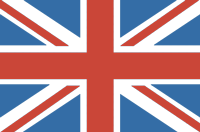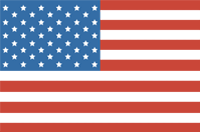Incels are back in the news again. This is because an NGO called the Centre for Countering Digital Hate (CCDH) has published a research briefing on incels and the Telegraph, which can’t keep off the subject, has duly covered it. In March, the paper ran a ludicrous piece on how “sinister emojis”, like a hedgehog meant to refer to neo-Nazis, were being “used by incel teenagers”. The latest one is titled: “Incel extremism doubles online amid Adolescence backlash”.
The headline is a bit misleading, since the claimed statistic relates not to incels per se, but to the world’s biggest online incel forum. According to the CCDH, this forum has seen a marked increase in traffic in recent months and a sharp uptick in members from 17,000 in September 2022 to 30,000 today. But the main focus of the CCDH’s briefing is on what incels thought of the Netflix drama Adolescence, a subject I wrote about back in April. The CCDH found that out of 658 forum posts on Adolescence, one in four contained words that were hateful, like “millennial muttwhores” and “male feminist enablers”, concluding that such sentiments reinforce “the show’s important call to action on tackling online misogyny”.
But does language like this reinforce an important call to action to tackle online misogyny? I’m not so sure. Having read a good number of the posts which the CCDH used for its analysis, it is true that many were indeed inflected with hateful terms and some engaged in a form of victim-blaming that is reprehensible and moronic. But much of the talk was also clearly exaggerated and intended to be funny and outrageous. It seems important to understand this aspect of incel communication and what its purposes are. Yet the CCDH doesn’t seem particularly interested in probing it.
It also seems blissfully unaware of the irony that Adolescence, which was supposed to engender constructive “conversations” about online misogyny, has inadvertently served to platform incels to an audience of tens of millions, thanks to the enormous worldwide success of the show.
According to the CCDH, the online incel forum that it doesn’t name “received 2.7 million visits in the first three months of the year”. That sounds like a lot, but it doesn’t seem to occur to the CCDH that some or even most of this traffic might have been driven by viewers who had watched or heard of Adolescence and wanted to find out more about incels. Some, no doubt, would have been journalists or researchers like me, or undercover “infiltrators” like Julia Ebner. And others would have found their way there after hearing about incels for the first time on Adolescence and thinking that they now had a name for their desperate situation. Not a few, I suspect, would be university students collecting material for a “thematic-analysis” of incel rhetoric; I’ve marked plenty of those.
When I reached out to the person who runs the online incel forum to ask him about the CCDH’s report, he wasn’t exactly talkative, perhaps owing to an understandable distrust of the media. But he did acknowledge that “there was a surge of traffic” to his forum after Adolescence aired in mid-March; he also said he hadn’t seen the show.
Many incels complain that they feel invisible, that no one sees them. But that’s now harder to sustain, given the endless stream of sensationalist articles on how dangerous they are — and how to spot the “warning signs” of incel visitation. With all the subterranean notoriety surrounding them, there has probably never been a better time to be an incel. Or, for that matter, part of the growing cottage industry of journalists, extremism experts and counter-terrorism practitioners who hang on their every hateful word.









Join the discussion
Join like minded readers that support our journalism by becoming a paid subscriber
To join the discussion in the comments, become a paid subscriber.
Join like minded readers that support our journalism, read unlimited articles and enjoy other subscriber-only benefits.
Subscribe